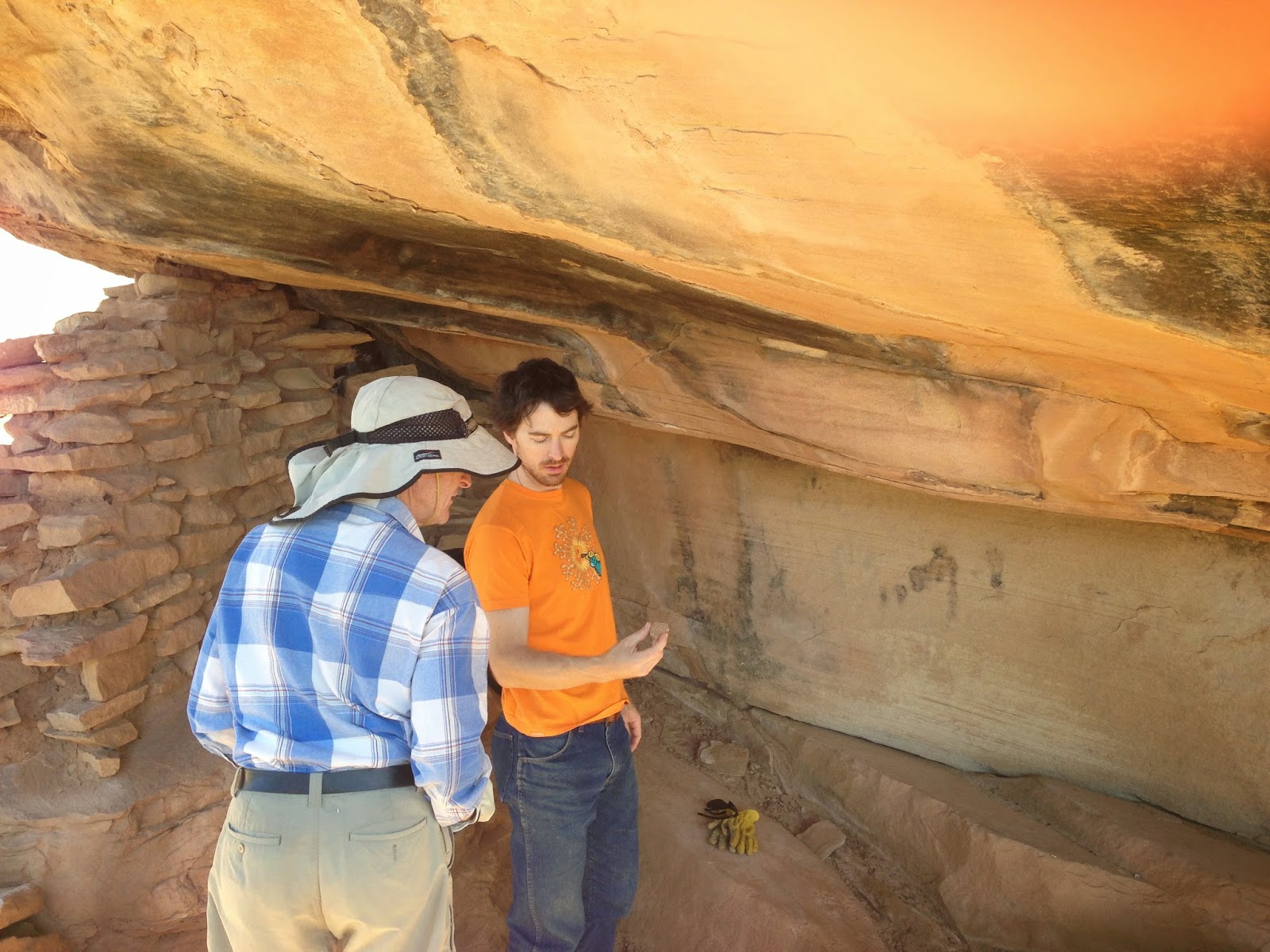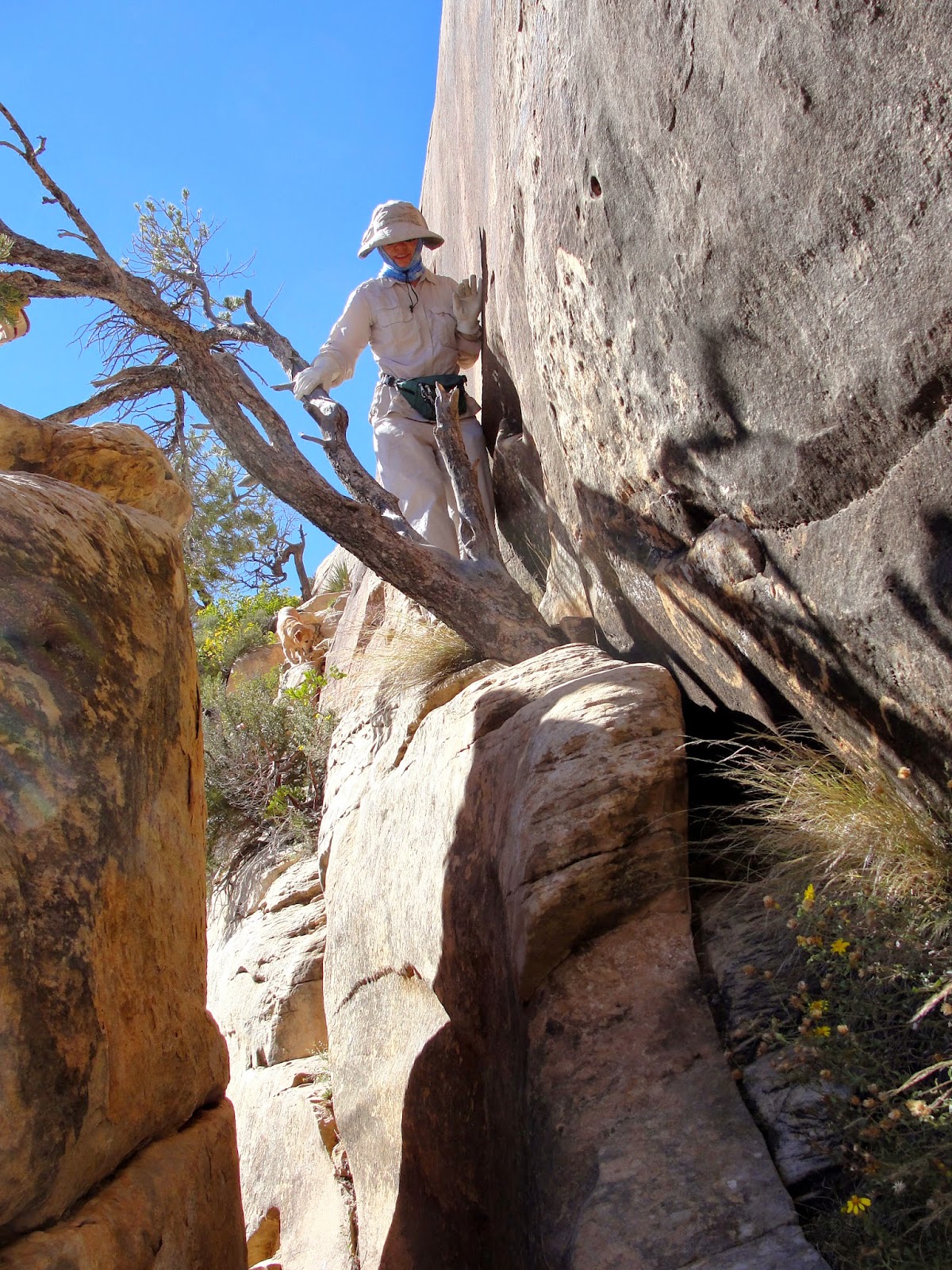There are several kivas, which may have been used as gathering places for social or sacred functions.
Note the T-shape (larger on top than on the bottom) of some of the doorways. These may have been designed to allow entry for someone carrying a large load, or perhaps they marked shared or sacred rooms.
We also saw the Cliff Palace from a distance. It's larger than Spruce Tree House. We would have enjoyed exploring it, but we were running out of daylight.
The Mesa Verde Museum, located at the beginning of Spruce Tree House trail, contains an amazing collection of pottery found in the area. This large vessel was filled with corn kernels when found in a cave nearby, and topped with the lid shown to the left.
Here's the sign displayed with the corn exhibit.
There are numerous glass cases of pottery. I like the double mugs,
and the duck and the 3 lobed pot,
the ladles,
as well as the colorful pot and the deer/mountain sheep design.






















































